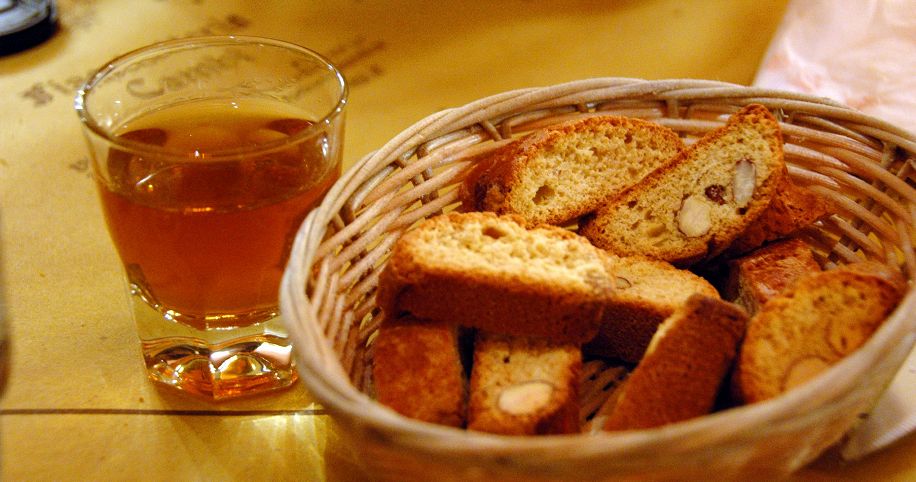The origins of this Italian dessert wine lie in ancient Greece. The name means "holy wine" and is derived from the "Settimana Santa" (Holy Week), as it is usually pressed between the end of November and Easter. It is also often used as a mass wine. In Italy, outside Tuscany, it is also known as Vino Santo. The OPAPsweet wine produced on the Aegean island of Santorini is called Vinsanto (without a blank). In Italy, it is often only produced for personal consumption and is often used for family celebrations such as christenings and weddings.
It is mostly sweet (dolce), but semi-sweet (amabile) and dry (secco) versions with different alcohol content and residual sugar are also produced. White and red varieties of Malvasia and Trebbiano, as well as Grechetto and Sangiovese, are favoured for production. These are hung on racks or laid flat on reed or straw mats to dry under the influence of air using the passito method. The raisined grapes are not pressed until the end of December at the earliest, with the mouldy grapes being removed beforehand.
Vinification
A wine with up to 16% alcohol by volume and a high residual sugar content ferments from the viscous must. After fermentation, the wine is filled into small chestnut or oak barrels (Caratello - 70 to 200 litres). Madre del Vin Santo" (mother wine) is often added. This is yeast residue from the previous wine to initiate a second fermentation. The barrels are then sealed, although modern producers keep an access door open to check fermentation. The barrels are then stored on the so-called "vinsantaia". This is usually the airy attic of the winery, where the barrels are deliberately exposed to the alternating cold winters and hot summers. The wine then begins to ferment a second time in summer, although this happens very slowly. The barrels are only opened again after two to six years at the earliest. The result is a rich, sweet wine with a high alcohol content and typical flavours of nuts, apricots, honey and spices. Biscotti di Prato (cantuccini), a traditional almond biscuit, are often served with Vin Santo:

DOC/DOGC zones
Vin Santo is produced in all colours such as rosé (in Tuscany Occhio di Pernice = eye of the partridge), red and white, from dry to sweet and can be produced as a single-varietal wine or as a cuvée. It is produced throughout central Italy and in Trentino (here Vino Santo), but the best-known wine comes in many varieties from Tuscany. There it is produced in almost all DOC zones. These are Bianco dell'Empolese, Bianco Pisano di San Torpè, Colli dell'Etruria Centrale, Monteregio di Massa Marittima, Monteregio, Montescudaio, Pomino, Val d'Arbia and Valdinievole. In the DOC areas of Chianti, Chianti Classico and Montepulciano, there are the DOC zones Vin Santo del Chianti, Vin Santo del Chianti Classico and Vin Santo di Montepulciano. However, the majority of the numerous Vin Santo in Italy are produced without a DOC/DOCG declaration.
Further information
For the production of alcoholic beverages, see Champagne (sparkling wines), Distillation (distillates), Spirits (types), Winemaking (wines and wine types) and Wine law (wine law issues).
Image: By McPig - originally posted to Flickr as Biscotti and Vin Santo, CC BY 2.0, Link
Voices of our members

Using the encyclopaedia is not only time-saving, but also extremely convenient. What's more, the information is always up to date.
Markus J. Eser
Weinakademiker und Herausgeber „Der Weinkalender“